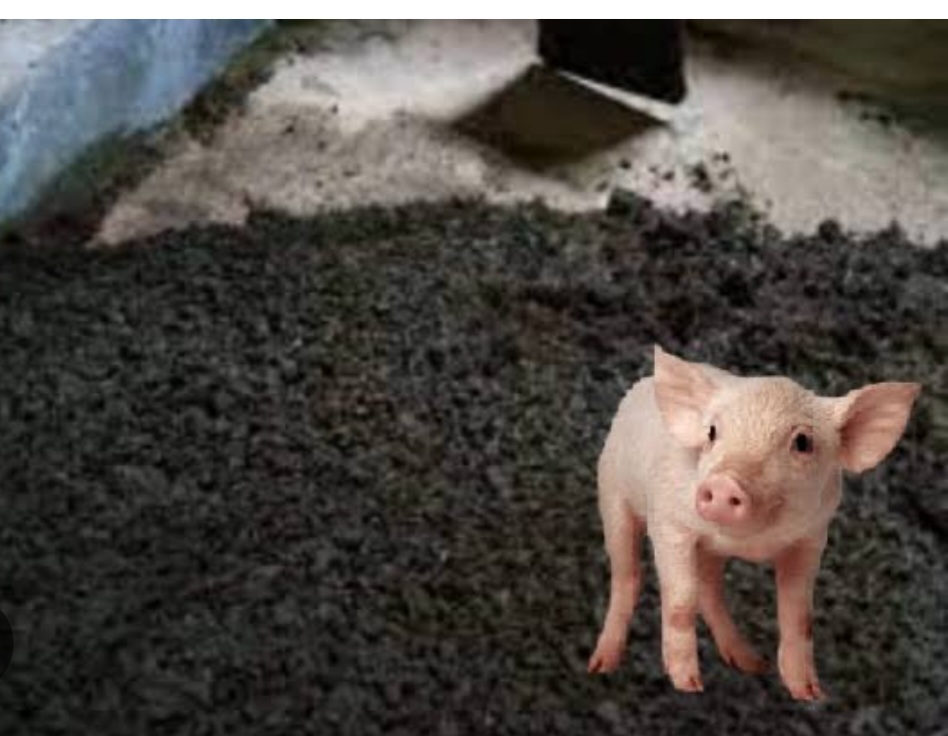
Livestock manure provides a valuable source of nutrients, organic matter and carbon to pastures and cropland. As a low input by-product, manure offers a long-term source of nutrients that can influence soil properties, increase soil carbon and nitrogen, and alter soil phosphorus and potassium concentration along with other nutrients.
Manures, like farmyard and green manures, differ in origin and impact on soil, with farmyard manure being animal waste and green manure being crops grown and incorporated into the soil. Both types of manure enrich the soil with organic matter and nutrients.
Farmyard Manure (FYM) is the decomposed mixture of animal dung, urine, and bedding materials, like straw. It’s origin and primary source include livestock like cows, horses, goat, sheep, poultry, guano, etc.). This manure contain a good balance of nutrients, including nitrogen (N), phosphorus (P), potassium (K) and micronutrients etc. It improves soil structure, water-holding capacity, and microbial activity. It is also one of the ingredients in compost manure.
Animal farm produces large amounts of cattle manure, sheep manure and poultry droppings etc and manure wash-water during the farming operations. All manures produced by these animals depend on the type of food and feed they fed upon.
Cattle, sheep and goats which ruminate on grasses and plant materials produce manure that contains nutrients uptake by the plants they fed upon. Non ruminants like poultry will produce droppings that contain nutrient from the feed they fed upon.
Farm yard manure in liquid form, is known as slurry. It is produced by more intensive livestock rearing systems where concrete or slats are used instead of straw bedding.
IMPACT OF MANURE ON THE ENVIRONMENT
Manure is not a uniform product, it is heterogenous and variable, with many components such as straw, bedding and by-products of the animal’s diet.
Applying manure or nutrients beyond plant requirements wastes time and money. It can also impact the environment if over applied nutrients leach into water bodies. Before usage, proper treatment or curing is required. Treatment of stored manure can include; stockpiling, composting, drying, and less commonly, separation and filtering.
Timing of application is important to reduce odours and potential runoff.
Application rates should be chosen based on nutrient requirements of the soil and crop to be grown, nutrient composition of manure, and the application method.
Using manure to supply N at recommended levels for crops will need applying more P than required, which will increase soil P levels.
COW MANURE (🐄)
Cattle manure, also known as cow dung, cow pats, cow pies or cow poop, is the waste product of bovine animals (Such as domestic cattle (“cows”), bison (“buffalo”), yak, and water buffalo), which are undigested residue of plant matter that passed through the animal’s gut. Its colour ranges from greenish to blackish, often darkening soon after exposure to air. It is rich in nutrients and often used as a natural fertilizer and soil amendment.
Atimes, it is often refered to as dilute fertilizer due to its high content of water and organic materials and a rich source of carbon and nitrogen. It also contain other valuable nutrients including; phosphorus (P), potassium (K), sulphur (S), magnesium (Mg), and calcium (Ca), as well as certain micronutrients. It contains several easily degradable as well as several difficult to hydrolyze substrates such as cellulose, hemicellulose and lignin due to the plant materials they feed upon.
Cattle manure also contain different substrates which help to proliferate complex microbial communities. It is used as an inoculum of electroactive bacteria for MFCs. MFCs ( Microbial Fuel Cells), a type of bioelectrochemical fuel cell system that generates electricity using microorganisms to convert chemical energy from organic matter into electrical energy, often used for wastewater treatment. MFC fed with particulate cattle manure and manure wash-water can generate power density of 67 to 215 mW/m2 in batch mode. Power yield of 15.1 W/m3 was reported when cattle manure was used as suspended solid substrate in MFC. Using cassette-electrode MFC configuration, a maximum of 16.3 W/m3 (765 mW/m2) was reported with suspended cattle manure, corresponding to 41.9% of the total COD removal in first 10 days of MFC operation. MFC enhances organic carbon degradation even when there is insufficient water supply. When cow manure was used with 80% moisture as organic carbon source in a compost MFC, it produced a power density of 349 ± 39 mW/m2 with 0.1 mg/cm2 Pt catalyst at the cathode. Electricity production from cattle manure was only around ~ 10 kJ/kg wet manure which translates to 50 kJ/kg dry manure. Integrating MFCs in manure and manure wash water treatments was beneficial in terms of effective degradation of substrate but the energy generations were limited in comparison to other bioenergy technologies
Manure with straw and bedding is an excellent source of organic matter when added to the land. The manure will degrade faster while the straw will degrade slower making manure a fertilizer with long term effect.
Cattle waste, or manure, often naturally includes straw and other bedding materials, creating a mixture that is rich in nutrients and suitable for composting to produce high-quality fertilizer.
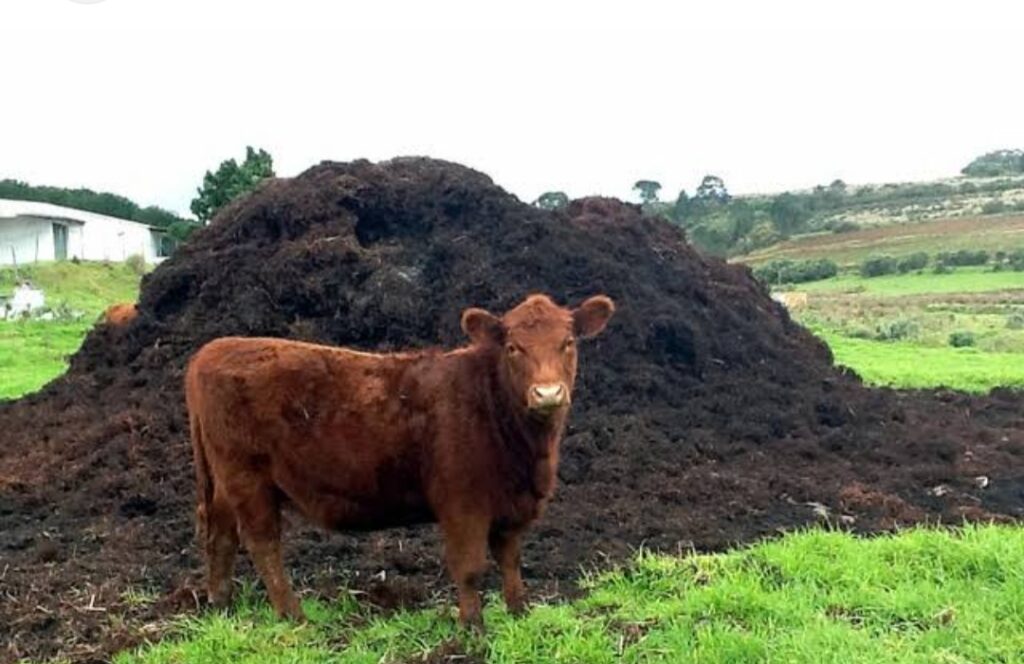
The manure is a nutrient-rich organic waste which is not just animal feces; it also contains tracks of hay, straw, bedding, grains, and other organic matter used to feed the animals and the straw is a carbon-rich organic material, which can create a valuable compost material that enriches soil fertility and improves soil health.
Straw and manure have different carbon to nitrogen (C/N) ratios, and the right balance is important for efficient composting. The straw is typically high in carbon (C), while manure is higher in nitrogen (N).
Manure (nitrogen-rich) can be mixed with straw (carbon-rich) to achieve a balanced C:N ratio, which is essential for microbial activity during composting.
A typical straw C/N ratio is 70-150. Cattle manure C/N ratio is 15-30. Meaning cattle manure is richer in nitrogen.
USES OF COW DUNG
1. DRYING COW DUNG FOR FUEL:
In many parts of the old world, and in the past in mountain regions of Europe, caked and dried cow dung is used as fuel. In India, it is dried into cake like shapes called upla or kanda, and used as replacement for firewood for cooking in chulah (traditional kitchen stove).
2. PRODUCTION OF BIOGAS: Cattle dung may also be collected and used to produce biogas to generate electricity and heat. The gas is rich in methane and is used in rural areas of India and Pakistan and elsewhere to provide a renewable and stable (but unsustainable) source of electricity.
3. FERTILIZER:
Cow dung, which is usually a dark brown colour, is often used as manure (agricultural fertilizer). If not recycled into the soil by species such as earthworms and dung beetles, cow dung can dry out and remain on the pasture, creating an area of grazing land which is unpalatable to livestock.
4. Cow dung is nowadays used for making flower and plant pots. It is plastic free, biodegradable and eco-friendly. Unlike plastic grow bags which harm nature, cow dung pots dissolves naturally and becomes excellent manure for the plant. From 20 July 2020, State Government of Chhattisgarh India started buying cow dung under the Godhan Nyay Yojana scheme. Cow dung procured under this scheme were utilised for the production of vermicompost fertilizer.
5. RELIGIOUS USES
Cow dung is used in Hindu yajna ritual as an important ingredient. Cow dung is also used in the making of pancha-gavya, for use in Hindu rituals. Several Hindu texts – including Yājñavalkya Smṛti and Manusmṛti – state that the pancha-gavya purifies many sins. The Mahabharata narrates a story about how Lakshmi, the goddess of prosperity, came to reside in cow dung. In the legend, Lakshmi asks cows to let her live in their bodies because they are pure and sinless. The cows refuse, describing her as unstable and fickle. Lakshmi begs them to accept her request, saying that others would ridicule her for being rejected by the cows, and agreeing to live in the most despised part of their body. The cows then allow her to live in their dung and urine.
6. FLOOR AND WALL COATING:
In several cultures, cow dung is traditionally used to coat floors and walls. In parts of Africa, floors of rural huts are smeared with cow dung: this is believed to improve interior hygiene and repel insects. This practice has various names, such as “ukusinda” in Xhosa, and “gwaya” in Ruruuli-Lunyala.
Similarly, in India, floors are traditionally smeared with cow dung to clean and smoothen them. Purananuru generally dated 150 BCE[11] mentions women of Tamil Nadu smear cow dung on the floors at the 13th day after her husband’s death to purify the house. Italian traveler Pietro Della Valle, who visited India in 1624, observed that the locals – including Christians – smeared floor with cow dung to purify it and repel insects. Tryambaka’s Strī-dharma-paddhati (18th century), which narrates a modified version of the Mahabharata legend about how the goddess Lakshmi came to reside in cow dung, instructs women to make their homes pure and prosperous by coating them with cow-dung. Many among modern generations have challenged this practice as unclean.
7. In 2021, the Government of India’s Khadi and Village Industries Commission launched the Khadi Prakritik paint, which has cow dung as its main ingredient, promoting it as an eco-friendly paint with anti-fungal and anti-bacterial properties.
Other uses
8. In central Africa, Maasai villages have burned cow dung inside to repel mosquitos. In cold places, cow dung is used to line the walls of rustic houses as a cheap thermal insulator. Villagers in India spray fresh cow dung mixed with water in front of the houses to repel insects.[16]
9. In Rwanda, it is used in an art form called imigongo.
10. Cow dung is also an optional ingredient in the manufacture of adobe mud brick housing depending on the availability of materials at hand.
11. COW CHIP THROWNING
A deposit of cow dung is referred to in American English as a “cow pie” or less commonly “cow chip” (usually when dried) and in British English as a “cowpat”. When dry, it is used in the practice of “cow chip throwing” popularized in Beaver, Oklahoma in 1970. On April 21, 2001 Robert Deevers of Elgin, Oklahoma, set the record for cow chip throwing with a distance of 185 feet 5 inches (56.52 m).
12. Cow dung provides food for a wide range of animal and fungus species, which break it down and recycle it into the food chain and into the soil.
DECOMPOSITION AND AGEING MANURE
Decomposition: Fresh manure needs to decompose or age to break down organic matter and eliminate harmful substances before being used as fertilizer.
Pathogens: Manure can contain pathogens and bacteria, requiring proper handling and management.
Soil Improvement: Applying manure to cropland improves soil organic matter and tilth, making it suitable for growing crops.
ADVANTAGES:
1. IMPROVES SOIL STRUCTURE:
Enhances soil properties such as aeration and water retention, especially beneficial for sandy soils lacking organic matter.
2. SLOW NUTRIENT RELEASE:
Decomposes slowly, providing a steady supply of nutrients to plants over time, reducing the need for frequent fertilization.
3. SUITABLE FOR ORGANIC FARMING:
Low salt and chemical content make it ideal for organic agriculture.
4. MILDER ODOUR:
Compared to poultry manure, it has a less pungent and more tolerable smell.
DISADVANTAGES:
1. LOWER NUTRIENT CONTENT:
Contains relatively low levels of nitrogen (N), phosphorus (P), and potassium (K), making it less effective for immediate fertilization.
2. HIGH MOISTURE CONTENT:
Moisture levels can reach up to 85%, increasing weight and delaying decomposition.
3. SLOW DECOMPOSITION:
May not suit crops requiring quick nutrient availability.
SHEEP MANURE (🐑)
Sheep manure, often referred to as “cold manure” due to its lower nitrogen content compared to other animal manures, is a natural, slow-release fertilizer that is safe for both vegetables and flower gardens. As a “cool” manure, meaning it’s lower in nitrogen and less prone to burning plants than “hot” manures like chicken manure, fresh or raw sheep manure can still burn plants if applied directly to the soil or in excessive amounts. Atimes, the manure usually consists of mixture of urine and feces of the sheep, along with any bedding, runoff, spilled feed, or other materials mixed with it. It is rich in phosphorus and potassium, beneficial for plant growth and soil improvement, and can be used as a mulch or compost.
The amount of nitrogen in the sheep manure is typically around 0.7% to 0.8%.
Phosphorus (P) ranges from 0.45% to 0.6% and
Potassium (K) ranges between 0.3% and 0.6%. The amount of organic matter content is typically high, ranging from 24% to 27%. Besides the major nutrients, other nutrients in sheep manure include micronutrients like boron, calcium, copper, iron, magnesium, manganese, molybdenum, sulfur, and zinc, which are essential for plant growth. OTHER BENEFITS INCLUDE:
a. IMPROVES SOIL STRUCTURE: It helps to improve soil structure, making it easier for roots to penetrate and absorb water and nutrients.
b. ENHANCES WATER RETENTION: Sheep manure can improve water retention in the soil, which is crucial for plant health, especially during dry periods.
c. ORGANIC MATTER: It is a good source of organic matter, which is essential for healthy soil and plant growth.
d. Uses in Gardening:
i. FERTILIZER: It can be used as a natural, slow-release fertilizer for a variety of plants, including vegetables, fruits, flowers, and shrubs.
ii. MULCH: Sheep manure can also be used as a mulch to help retain moisture, suppress weeds, and improve soil temperature.
e. COMPOST: It can be composted to create a nutrient-rich soil amendment.
Benefits of Composted Sheep Manure:
REDUCED ODOUR: Composted sheep manure has a lower odor compared to fresh manure.
SAFE FOR PLANTS: It is safe to use on most garden plants, including vegetables.
PROMOTES HEALTHY ROOT SYSTEMS: It helps to promote strong root systems, which are essential for plant health and productivity.
APPLICATION:
DIRECT APPLICATION: Sheep manure can be applied directly to the soil, either by tilling it in or spreading it on the surface.
SIDE DRESSING: It can also be used as a SIDE dressing, applying it along the rows of plants.
TEA: Sheep manure can be used to make a tea for watering plants or foliar feeding.
COMPARING SHEEP MANURE NUTRIENT CONTENT WITH OTHER MANURE SOURCE
While sheep manure is a good source of organic matter and beneficial microorganisms, Its nutrient content is typically lower in concentration compared to poultry manure and other sources.
Cow manure is also considered as “cold” manure, similar to sheep manure, and is better suited for root vegetables.
Poultry manure is known for its high nitrogen content and is favoured for rapid microbial activity.
Horse manure is also a good source of nutrients and organic matter, but it can be “hot” and needs to be composted before use.
TYPES:
Sheep manure can be used raw, aged, or composted.
BENEFITS:
SOIL IMPROVEMENT: Sheep manure is a great soil improver and conditioner.
NUTRIENT SOURCE: It provides nutrients like nitrogen, phosphorus, and potassium, as well as micronutrients.
SLOW-RELEASE: It acts as a slow-release fertilizer, gradually providing nutrients to plants.
WATER RETENTION: It helps improve soil structure and water retention.
USES:
GARDENS: Sheep manure is suitable for both vegetable and flower gardens.
LANDSCAPING: It can be used to improve soil in landscaping projects.
COMPOSTING: It’s a valuable component of compost piles, enriching the soil with organic matter and nutrients.
COMPOSTING:
It’s generally recommended to compost sheep manure before using it in gardens, as this helps to break down the manure and reduce the risk of burning plants.
APPLICATION:
When using sheep manure, apply it sparingly and mix it well into the soil.
STORAGE:
Store sheep manure in a dry place to prevent it from becoming moldy or attracting pests.
SAFETY:
Avoid using raw manure from animals that may be carrying diseases, and always wash your hands thoroughly after handling manure.
ADVANTAGES:
NUTRIENT BALANCE:
Contains moderate levels of nitrogen, phosphorus, and potassium, making it suitable for most crops.
FASTER DECOMPOSITION:
Breaks down more quickly than cow manure, supplying nutrients at a faster rate.
IMPROVES SOIL:
Increases organic matter without significantly affecting soil acidity.
MILDER ODOUR:
Less intense than poultry manure, making it suitable for fields near residential areas.
DISADVANTAGES:
LIMITED QUANTITY:
Sheep produce less manure than cows or poultry, making it harder to obtain in large amounts.
WEED SEEDS:
If not well-processed, it may contain weed seeds that can germinate in the soil.
Usage:
Ideal for seasonal crops such as vegetables and grains, offering balanced nutrient release.
HORSE MANURE:
Horse manure is also a good source of nutrients and organic matter, but it can be “hot” and needs to be composted before use.
It is a good source of essential macro- and micronutrients for plant growth and a popular additive to many home gardens. It is also highly valued by farmers because composting of horse manure makes the compost pile become super charged and also increases soil fertility, regeneration, and high quality yields. It makes a suitable and inexpensive fertilizer for plants. Horse manure can give new plants a jump start while providing essential nutrients for continual growth. Composting of horse manure does not require any special tools or structures. In fact, it can easily be composted by mixing with a shovel or pitchfork. It averts the negative effects of salinity and improves the capacity of soil water retention. This manure is recommended for crops like lettuce, tomato, and mint because it increases the crop yield with a lasting presence in the soil.
The exact nutrient composition varies based on the horse’s diet and exercise level. The manure can also be mixed with bedding, especially in the case with stall waste. Bedding material used in the sable varies and may be straw, elephant grass (miscanthus), wood shavings, pulp or pellets. If sourcing manure direct from a local supplier, find out the type of bedding material used, as this affects how long the manure should be left to rot down before using.
Manure and compost can be tested in a laboratory for nutrient content, and this is a good idea when using it as a source of nutrients for a crop. It is important to note that overfeeding nitrogen and phosphorus increases the amount of these nutrients in manure, so care should be taken to balance the horse’s diet to its nutritional needs.
Horse manure can also be an excellent soil amendment for pasture. It makes an extremely good soil improver for the garden. It is perfect for digging in or spreading as a mulch. Fresh manure must not be used directly on the garden as it can actually remove nutrients from the soil and scorch plants, but it can be added to compost heaps.
Composted or rotten horse manure should take at least six months. If the horse bedding is wood-based, manure should be at least a year old to ensure the wood in it has broken down completely, otherwise it takes nitrogen (a major nutrient required by plants) from the soil. However, fresh horse manure is a good compost activator, helping to speed up the rotting process and improving the quality of the compost produced.
Fresh horse manure usage
Fresh horse manure is not suitable for direct usage on plants as it will scorch roots and rot the stem. Apart from this negative effect, the bedding material will not have broken down.
Fresh horse manure can only be applied to soil that is prepared for growing plants for at least six to 12 months, depending on bedding type.
NEGATIVE EFFECTS OF USING HORSE MANURE
1. Fresh manure direct from stables may have several disadvantages. Even well-rotted manure is likely to contain weed seeds, both from hay that the horses have eaten and those that have blown onto manure heaped outside. The same goes for roots of perennial weeds that grow quickly in a manure heap – this means there could be problems of importing the weeds into the garden.
2. Weedkiller contamination is another potential danger in the use of horse manure. Pasture fields treated with hormone-type weedkiller used to combat broad-leaved weeds, are chemical that are undigestable material. If eaten by horses, it may persist for years and, if contaminated manure is added to the soil, can lead to damaged and distorted plants.
POULTRY MANURE (🐓)
Poultry manure, a valuable byproduct of poultry farming, is a rich source of nutrients like nitrogen, phosphorus, and potassium, making it an effective organic fertilizer that improves soil fertility and crop yields.
Poultry like fowl also produce manure called chicken manure, also known as “black gold”. It is one of the best nutrient boosts used to improve soil fertility.
One fowl produces approximately 8 to 11 pounds (3.6 to 5.0 kg) of manure monthly. If a farm has a total of 100 fowl, this means the farm will generate about 360kg to 500kg of manure per month.
The manure is an excellent source of nutrients such as nitrogen and phosphorus. These two nutrient content are at least twice as high as those found in other farm manures such as cow manure.
Also, fowl droppings that form chicken manure contains other materials including: urine, feathers, leftover feed, and coop bedding material such as straw and hay, pine or cedar shavings, grass clippings, shredded leaves, and recycled paper. These materials bring about the reasons for variation of NPK ratio in the manure. Apart from this,
the percentage of fowl feces and other materials is not the only variable in the nutrient content. The age of the fowl and the way the fowls are raised also play a role.
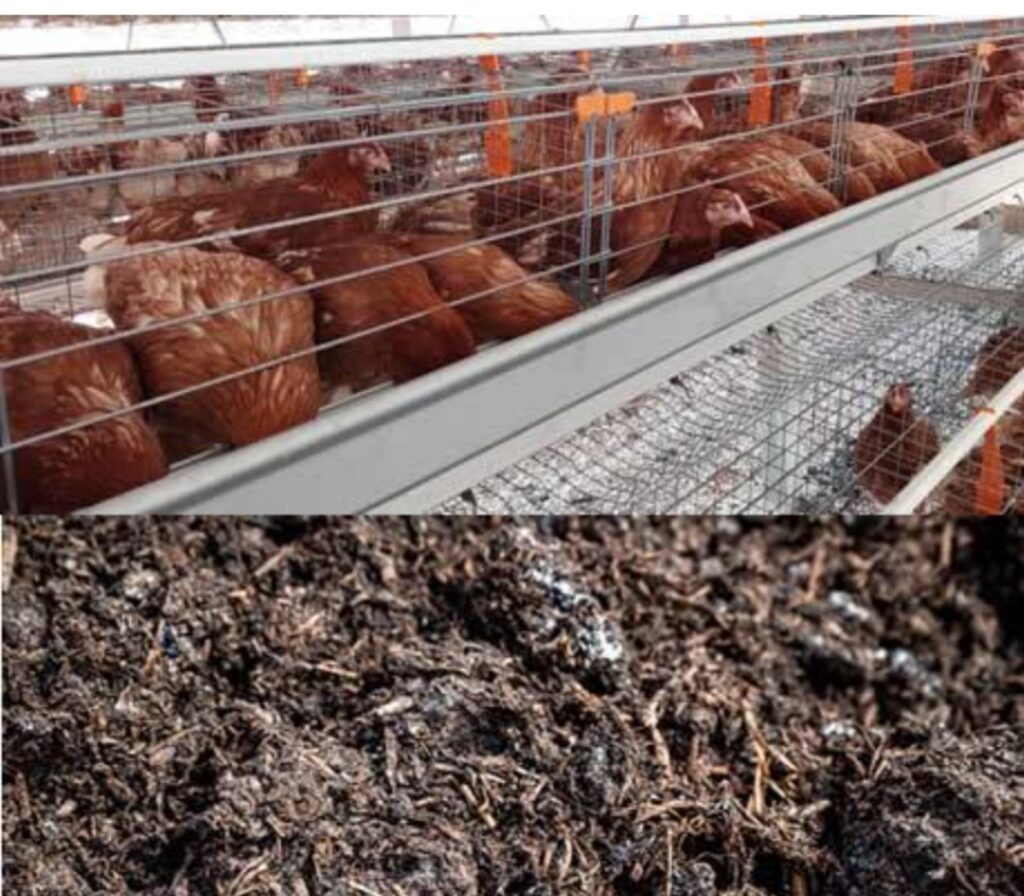
THE BENEFITS OF CHICKEN MANURE
As a non-synthetic organic fertilizer, chicken manure has numerous benefits.
1. It is a complete fertilizer that contains the macronutrients nitrogen, phosphorus, and potassium, as well as important micronutrients needed for healthy plant growth.
2. SOIL AMENDMENT: Chicken manure is more than a fertilizer, though, it is also a good soil amendment. It adds organic matter to the soil, improves soil structure, increase moisture-holding of the soil, improve soil drainage capability, and aeration.
3. Soil high in organic matter is less prone to erosion and retains fertilizer better.
4. MICROBE FOOD: The organic matter in chicken manure feeds soil microbes and allows organic nutrients to break down faster, making them available to plants more quickly.
5. QUICK DECOMPOSITION:
Releases nutrients rapidly, ideal for crops needing immediate nutrition.
5. ECONOMIC EFFICIENCY:
Due to its high concentration, small amounts yield great results.
Chicken manure needs to be aged before adding it to the soil. It comes in two types: commercially processed in bags and the fresh manure. There are substantial differences in how to prepare and use them.
Bagged chicken manure can be bought. They are produced dried and pulverized or pelletized. On a weight-for-weight basis, dried manure is more concentrated than fresh manure, which contains up to 76 percent water. Dried manure is usually sterilized and odour-free.
Fresh manure on the other hand are sourced from backyard or farm chicken coop. It has a strong smell and may contain harmful pathogens such as E. coli or Salmonella. Unlike dried manure, it cannot be used as such; it must be composted or aged before it is applied, or else the high ammonia content in it will burn the plants.
Chicken manure from conventionally raised fowls may be contaminated with antibiotics. Little research is available about the amount of antibiotic residue in aged chicken manure. Using only organic chicken manure is the safer option.
HOW TO AGE CHICKEN MANURE
Aging fresh manure will destroy harmful pathogens and reduce its ammonia content. The pathogens in the manure stop reproducing at temperatures of 140 to 160°F. This is the temperature that can be reached in a compost pile, a common method of aging manure.
The best types of crops that grow best in chicken manure include;
Nitrogen-loving plants and vegetables. Others include; different types of tomatoes, peppers, eggplants, squash, melons, strawberries, cucumbers, beans, and some fruit trees, such as apple trees, that prefer less acidic soil.
Plants that will not grow in chicken manure
Chicken manure is more alkaline than acidic, so serious acid-loving plants do not like to grow in chicken manure. For example, plants such as blueberries, azaleas, and rhododendrons do not like to grow in chicken manure.
COMPOSITION:
Poultry manure consists of animal feces, urine, feathers, and bedding material (like wood shavings or sawdust).
NUTRIENT CONTENT:
It contains all 13 essential plant nutrients, including nitrogen (N), phosphorus (P), potassium (K), calcium (Ca), magnesium (Mg), sulfur (S), and micronutrients. Fresh chicken manure contains 0.5% to 0.9% nitrogen, 0.4% to 0.5% phosphorus, and 1.2% to 1.7% potassium.
APPLICATION:
Poultry manure can be applied directly to fields or composted to create a more stable and less pungent fertilizer.
The application rate should be based on the nutrient needs of the plants and the manure’s nutrient content.
It’s important to consider the potential for nutrient imbalances or environmental impacts (e.g., water pollution) with improper application.
HANDLING AND STORAGE
Of all animal manure, poultry manure has the highest amount of nitrogen, phosphorus, and potassium. It has a strong odour, especially when fresh or improperly managed. It may contain pathogens or heavy metals, so proper handling and storage are crucial.
Dried and pelleted poultry manure products are often sterilized during manufacture, so are less of a risk than fresh and composted poultry litter.
Optimal storage conditions for chicken manure include keeping it in a covered area and retaining its liquid, because a significant amount of nitrogen exists in the urine.
TYPES OF POULTRY MANURE:
a. POULTRY LITTER: The mix of bedding material, manure, and feathers.
b. COMPOSTED POULTRY MANURE: Poultry manure that has been composted to break down organic matter and reduce odors.
c. PELLETIZED POULTRY MANURE: Poultry manure that has been dried and pelleted for easier handling and storage.
NEGATIVE EFFECTS OF POULTRY MANURE
There are disadvantages to using fresh chicken manure if it is not aged properly.
1. It can burn the plants or introduce harmful pathogens into the soil. Bagged chicken manure does not have these problems if you follow the package’s directions.
2. POLLUTION
Mass applications of chicken manure may create an unpleasant odour.
In December 2011, the environmental group at Maryland asserted that water runoff from agricultural land fertilized with chicken manure was increasing the pollution levels of Chesapeake Bay. The group asserted that excessive phosphorus from the runoff was contributing to the increase of dead zones in the bay. In 2015, in efforts to address the matter before leaving office, Maryland Governor Martin O’Malley put a new regulation into use that “would have limited the amount of poultry manure that Eastern Shore farmers can use on their fields”. However, the following Governor Larry Hogan quickly absolved the new regulation after being sworn into office. The runoff problem has been attributed to the use of “an outdated scientific tool for calculating the correct amount of manure”. A proposed solution from scientists at the University of Maryland is to have farmers use a new (corrected) formula to calculate proper quantities of chicken manure for agricultural uses.
3. HUMAN DETERRENT
Chicken manure has been used as a human deterrent. In July 2013, in Abbotsford, British Columbia, city workers applied chicken manure at a tent encampment to deter homeless people from the area. The affected homeless planned on initiating small claims lawsuits for loss of property and property damage. One of the affected homeless people described the tactics of city workers as “a chicken shit way to do things”. The mayor of Abbotsford and the Fraser Valley city manager later apologized regarding the incident. Similar instances of using chicken manure in this manner have occurred in British Columbia in Surrey and in Port Coquitlam, the latter of which occurred “shortly after the Abbotsford incident”.
3. RISK OF PLANT burn:
High nitrogen content can harm plants if overused or unprocessed.
4. STRONG ODOUR:
Has an intense smell that can be unpleasant near populated areas.
5. INCREASED ACIDITY:
Overuse may increase soil acidity, negatively affecting some crops.
6. NEEDS PROCESSING:
May contain harmful bacteria such as Salmonella and E. coli, requiring proper treatment before use.
Soil testing before application ensures the correct manure type meets crop needs.
MEAL MANURES (BONE/FISH/BLOOD, Etc.)
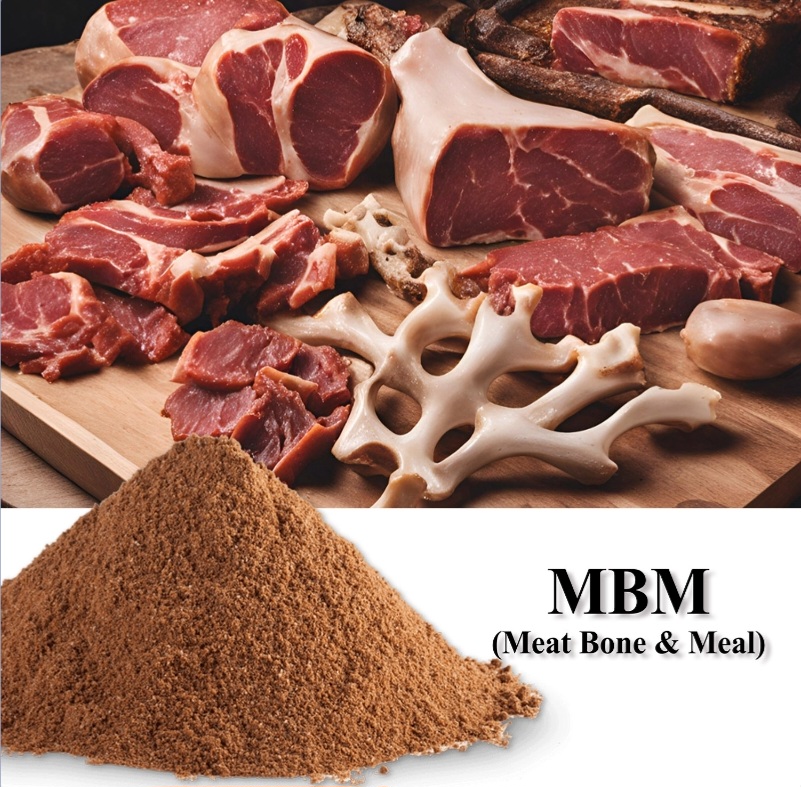
This group of manures is highly reactive and suitable for land application on a variety of soils and crops, but mostly they are preferred for commercial horticultural crops, and they are used as a major component of livestock diet.
As compared to other manures, these meals are produced comparatively in lower quantity and used as a major part of livestock/poultry diet in developing countries. The major types of meals are:
- Blood meals
- Bone meals
- Fish meals
- Meat meals
- Horn and hoof meals
These manures originate from the waste/byproducts of animals, usually the slaughter waste that is not intended for human consumption. They are also used as animal diet. Used as soil amendments, rather than creating an additional environmental issue through the incineration process.
Meals produced from animal byproducts are rich sources of mineral nutrients (both macro and micro), especially as the major source of P. They possess a higher degree of mineralization due to suitable ratio of highly soluble C and N which make them excellent alternatives for chemical fertilizers
a. FEATHER MEAL
Feathers are produced worldwide. They represent 3-7% weight of the live bird, therefore producing a considerable mass of protein. Approximately 50 billion fowls were used for human consumption in 2014. The feather from poultry slaughtering is traditionally treated as waste, with carbon emissions associated with its disposal. According to FAO in 2019, about 24 billion fowls were produced in 2018. Assuming that a fowl weighs 2 kg and that the average percentage of feathers is 5%, the overall amount of fowl feathers in 2018 can be estimated to be 2.4 million tonnes. Other poultry productions (ducks 1.12 billion heads, turkeys 466 million heads and geese 365 million heads) yield an additional 0.42 million tonnes of additional feathers, resulting in a total amount of feathers up to 2.8 million tonnes in 2018. Reusing feather meal produces extra value while reducing carbon emissions.
Feather meal or Feather powder, is a byproduct of processing operations from poultry slaughter house. it is made from poultry feathers which are partially hydrolyzed under pressure in the presence of Ca(OH)2. During the process, they are grinded under the elevated heat and pressure, and then dried. Although, its total nitrogen levels are fairly high (up to 12%), the bioavailability of this nitrogen may be low if not hydrolyzed beforehand.
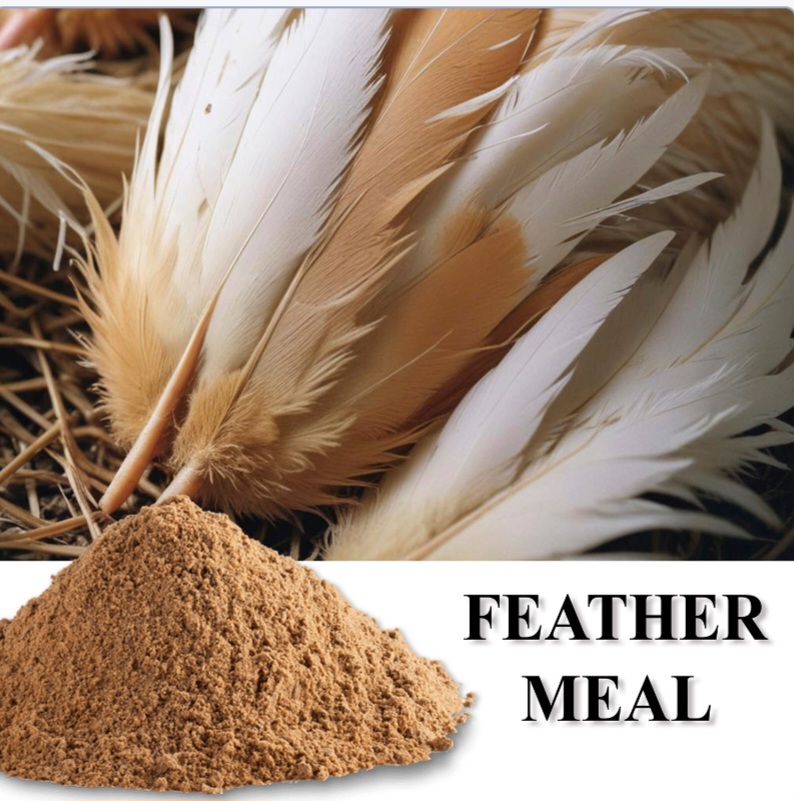
It has a protein content of 80%–85%, and not less than 75% of the protein must be digestible by the pepsin digestibility method. Digestibility of feather meal products can vary depending on processing conditions, and the crude protein apparent digestibility coefficient of individual feather meal products dictates appropriate levels used in fish feeds.
Apart of it being used as fertilizers, feather meal is also used in formulated animal feed.
USING FEATHER MEAL AF LIVESTOCK FEED ADDITIVES
Feather meal cannot be used everywhere to feed all species. When used as animal feed, the indigestible keratin must be broken down (partially hydrolyzed) to become digestible for animals. One process for doing this is called rendering: steam pressure cookers with temperatures over 140 °C (284 °F) are used to “cook” and sterilize the feathers. It is then dried, cooled and ground into a powder for use as a protein source for animal feed (mostly ruminants and fish).
There are many other ways to achieve hydrolysis such as acid treatment, fermentation, and enzyme-processing.
As fertilizers, feather meal contains a large amount of nitrogen (15%) and sulfur (2.4%). It is rich in plant micronutrients such as iron and zinc.
Native (non-hydrolyzed) feather meal is a semi slow-release fertilizer. The nitrogen is slowly released through decomposition by soil microbes. It is not water-soluble and hence does not make a good liquid fertilizer. When adding it to a garden as a nitrogen source, it must be blended into the soil to start the decomposition to make the nitrogenous compounds available to the plants.
Compared to hydrolyzed feather meal, it releases nitrogen quickly.
IMPORTANCE OF FEATHER MEAL AS FERTILIZER
1. Being high-nitrogen fertilizers, both types of feather meal ( hydrolyzed and non-hydrolyzed) are useful for increasing the growth of green leaves.
2. Both are also good for encouraging the growth of microbes, improving soil structure, and activating the composting process.
REASONS FOR HYDROLYSING FEATHER BEFORE USAGE
1. Feather meal is a protein source of poor quality because its protein is deficient in amino acids that is essential in many livestock species, notably lysine, methionine, histidine and tryptophan.
2. Another issue is that keratin, the main component (80-100%) of feather proteins, is poorly digestible when raw. This highly polymerized protein contains about 8% cysteine, a sulphur amino acid that makes strong disulphur bonds between each other within the primary structure and contributes to the folding of the chain into secondary structures (alpha-helix and beta-sheet in a ratio of 2:1). While this makes raw feathers light, durable, and unable to stretch (unlike hair), it also makes feather keratin undigestible (digestibility < 5%).
The above gives reasons why it is necessary to hydrolyze feather meal in order to transform it into a valuable source of protein in animal feeding.
A thorough hydrolysis under controlled conditions destroys disulphur bonds between amino acids and convert feathers into hydrolized feathers. Hydrolized feathers are then dried to 8% moisture and ground to produce a valuable uniform hydrolized feather meal. All feather meals produced within the EU are reported to be hydrolized. Variability of feather meal between batches and between plants can be quite high due to differences in processes.
BLOOD MEAL
Blood meal, a dried animal blood byproduct, is a popular organic fertilizer rich in nitrogen, promoting lush green growth, especially for leafy greens, and can also deter certain pests. It is a byproduct of slaughterhouses, made from dried animal blood. Dried blood from cattle slaughterhouses can be used as organic N fertilizer because it contains about 10%–13% organic N. The main component of the fertilizer is hemoglobin, which is characterized by the presence of a prosthetic group containing iron (Fe).
It is also used as a high-protein animal feed and livestock dietary supplement. It is mainly added to supply dietary lysine for cattle, fish and poultry. Prior to use, it is sometimes mixed with molasses.
Alternatives to Blood Meal include feather meal and alfalfa meal. Blood meal is sometimes used as a composting activator.
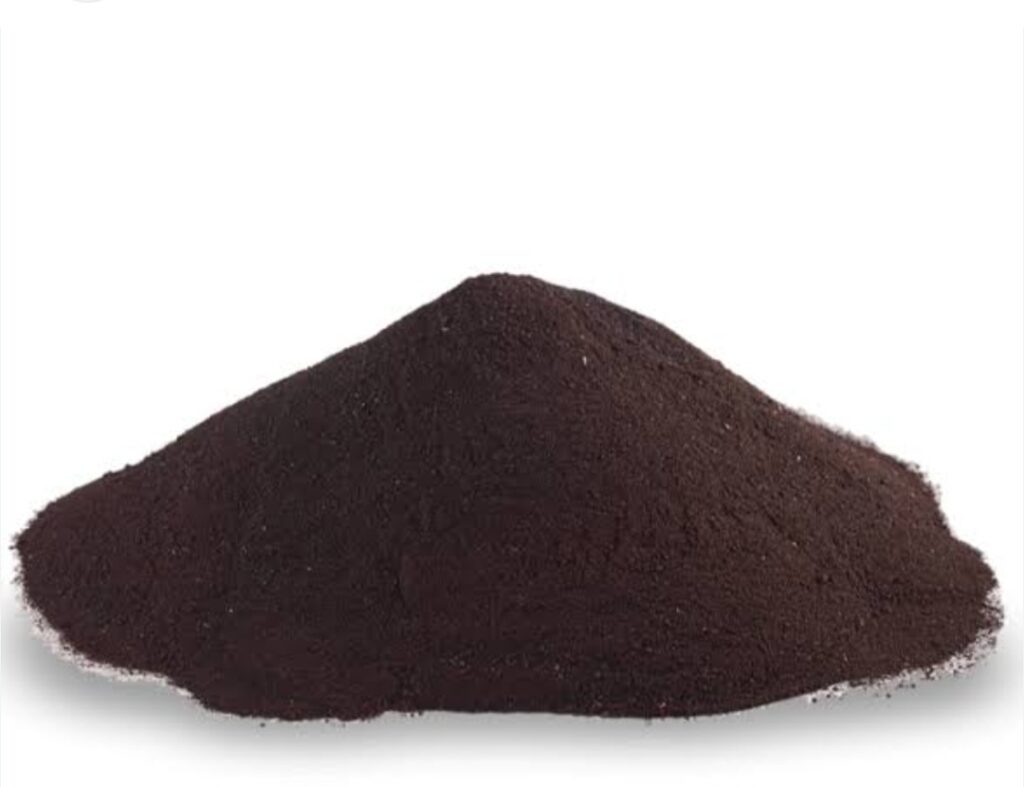
It is a good source of nitrogen, which is crucial for healthy foliage and overall plant vigor.
Promotes Lush Growth:
It encourages lush, green growth, particularly in leafy greens like lettuce, spinach, and cabbage.
It improve soil by revitalizing soil that has been depleted of nutrients, especially nitrogen.
It also produce strong odour which can deter certain animals, like deer, moles, and ground squirrels, from entering gardens. To carry out this function, the blood needs to be dried before being used as blood meal and animal repellant. It is spread on gardens to deter pest animals such as rabbits. These animals smell the blood and are repelled by the odour. Several drying methods such as, oven drying, drum drying, flash drying or spray drying, and solar drying, are available to make inert powder of blood meal. In an experiment, blood meal was incubated in the soil for a period of 1 year and organic matter in the soil composition was evaluated at regular time intervals using a sophisticated technique like isoelectric focusing (IEF) and humification parameters. The results showed that the availability of the Fe increased during the incubation period due to the progressive degradation of the prosthetic group and the successive chelation of the Fe from the humic substances
It is easy to apply and long-lasting in the soil.
It is environmentally friendly,
it helps reduce waste.
BONE MEAL
Meat meal and bone meal can be applied as soil fertilizer. Meat/bone-meal fertilizer adds higher amounts of P than the chemical fertilizer (24 kg/ha) compared with 15 kg/ha of P added with Nitrogen–Phosphorus–Potassium (NPK) (21–4–7 kg/ha). Moreover, compared to phosphatic fertilizers, these organic fertilizers are free from HM contamination and contain >30% organic carbon. These fertilizers emit three-times less greenhouse gas (GHG) than chemical fertilizers. The success of these manures for immobilization of HMs lies in their Ca and P contents and adsorption sites, because HMs are bound to phosphate, dissolution of bone meal increases soil pH, which also results in immobilization . Bone meal reduces the Cd concentration by approximately 87% and leaching by 63%. Similar results had been reported in which application of bone meal decreased the exchangeable Cd fraction by 7% and also decreased the Cd in leachate up to 34%.
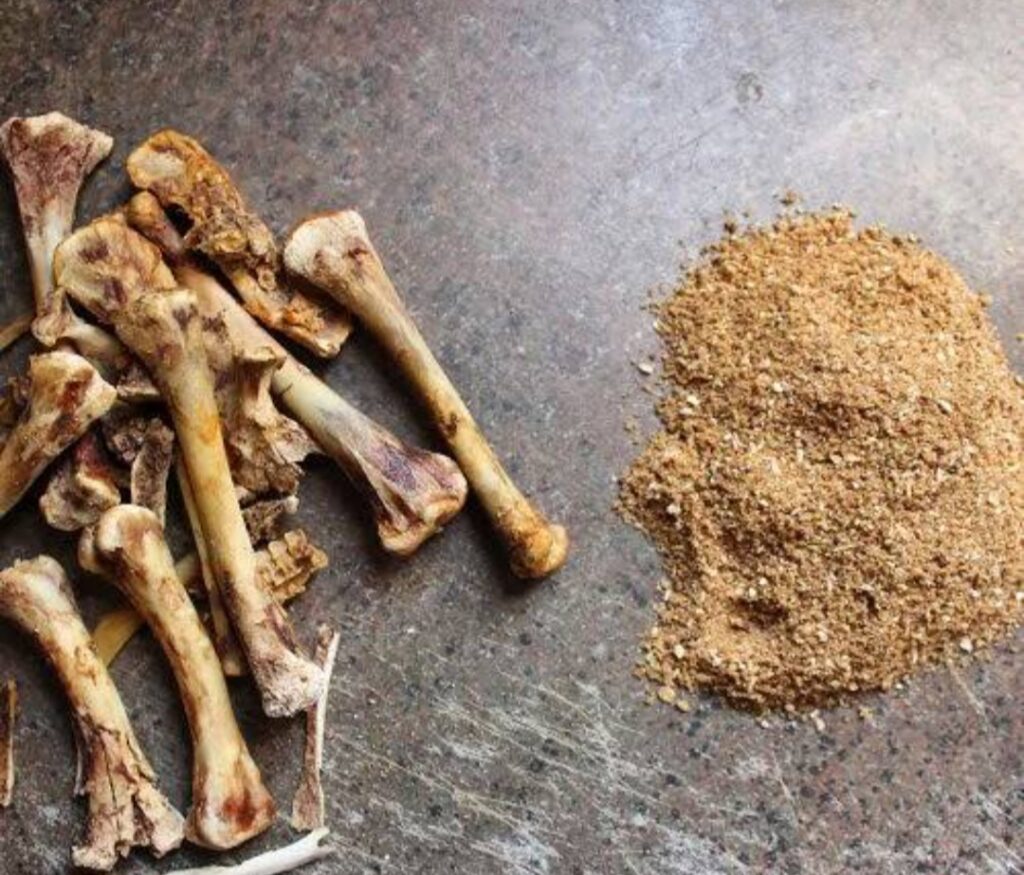
PIG MANURE
Swine manure is a valuable fertilizer that contains nutrients that plants need to grow. It can be used to fertilize crops and trees.
Pig manure, a valuable resource, is rich in nutrients like nitrogen, phosphorus, and potassium, making it a potential fertilizer for crops and improving soil quality. However, improper application can lead to environmental issues, so proper management and composting are crucial.
Pig slurry, a liquid form of pig manure, is a mixture of excrement, urine, and potentially water and bedding. Pig manure on the other hand can be solid or slurry, depending on the dry matter content.
Pig Slurry contain dry matter content which is relatively low, typically with less than 20% solids. It contains high amount of nutrients (N, P, and K).
It pose a lot of environmental issues. It can lead to environmental pollution if not managed properly, especially regarding its nitrate and phosphate levels.
Spain is the second leading European country with regard to pig population (22.4 million head in 2000), representing 18% of the total production within the European Union, with a substantial increase over the last 10 years (38% from 1990 to 2000). Therefore, amount of pig manure and pig slurry produced per day is so enomous.
Apart from the macronutrients supplied by pig manure and slurry, they also supply micronutrients. It contains all the 13 essential plant nutrients (N, P, K, Ca, Mg, S, Mn, Cu, Zn, Cl, B, Fe, and Mo). Also, improves Soil quality by enhancing soil texture, water holding capacity, and encourages soil microorganisms.
Apart from the above, pig manure also has several other advantages. Using pig manure can reduce the need for expensive commercial fertilizers.
It promotes sustainable agriculture by replenishing soil nutrients and improving soil health. Pig manure can lead to increased crop yields and improved plant growth.
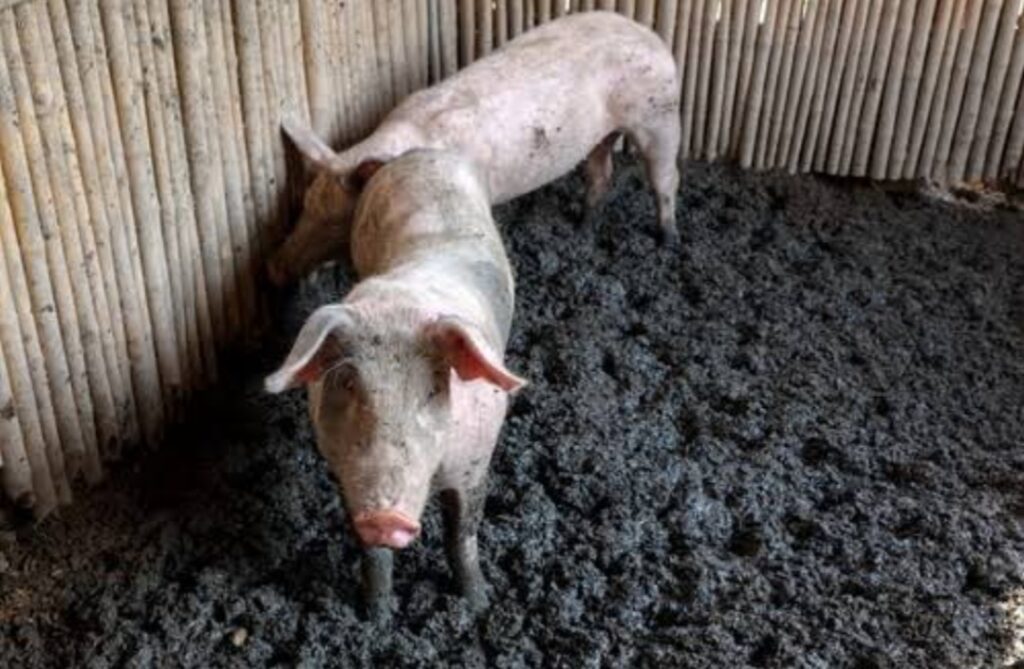
Disadvantages of using pig manure and Management:
1. ENVIRONMENTAL CONCERNS:
Improper application can lead to nutrient runoff, water pollution, and greenhouse gas emissions.
2. HEALTH RISKS:
Direct application of raw manure can pose health risks due to the presence of harmful organisms.
3. ODOUR AND BULKINESS:
Pig manure can have a strong odor and be bulky to handle and transport.
4. COMPOSTING:
Composting pig manure is recommended to reduce health risks, improve nutrient availability, and enhance soil quality.
SEPARATION AND TREATMENT:
Pig manure can be separated into solid and liquid fractions, which can be treated and utilized separately.
The solid fraction can be used as an organic fertilizer or to generate energy in biomass incineration plants and agricultural biogas generators.
BENEFITS
1. NUTRIENTS: Contains macronutrients: nitrogen, phosphorus, potassium, calcium, magnesium, sulfur, and Micronutrients like; sodium, iron, manganese, zinc, and copper.
2. SLOW RELEASE: Releases nutrients slowly into the soil
3. The nutrient content of swine manure varies depending on the age of the animals, ration, temperature, and other factors
APPLICATION
The amount of swine manure applied depends on the nutrient needs of the plants. It should only be applied when weather and soil conditions are favorable. It should not be applied to saturated or flooded soil
RABBIT MANURE
Rabbit manure often called “bunny gold” or “bunny honey,” is a natural fertilizer that is rich in nutrients and can be used in gardens. It is dry,odourless, and in pellet form makes it suitable for direct use in the garden. It does not need composting, unlike other manures like fowl or cow manure. Also, it can be applied any time of the year and helps give plants a boost during the growing season.
Rabbit manure is a storehouse of nutrients when applied in the late fall and winter. It is a cold manure unlike “hot” manures of fowls or cow, therefore, there is no threat of burning plants and roots. It can be used as a top- dress, mulch around plants, bury in the ground under transplants or just working it into the soil right from the rabbitry.
In addition, rabbit manure is packed with nitrogen, phosphorus, potassium, and other essential nutrients that plants need for healthy growth. It’s direct application to the garden does not pose a risk of burning plants.
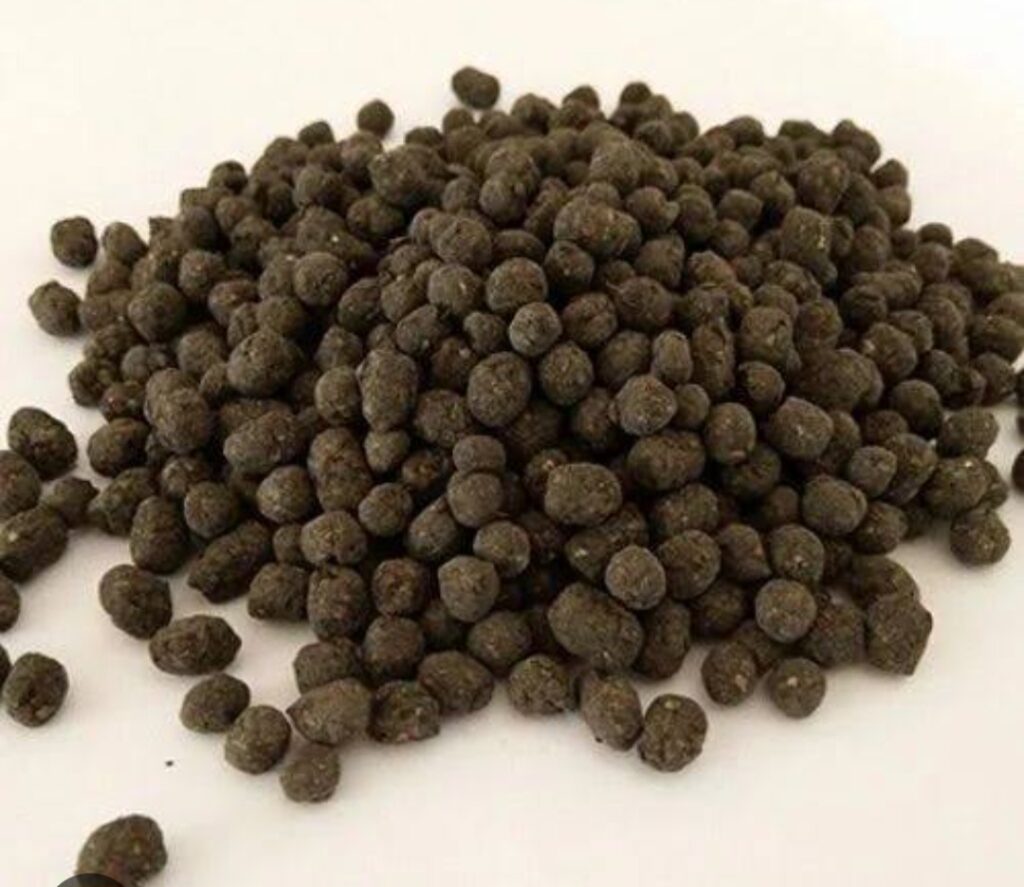
OTHER BENEFITS USES OF RABBIT MANURE
1. Improves Soil Structure, drainage, and moisture retention, making it a great addition to any garden bed.
2. It is easy to Handle because it is dry, odourless, and comes in pellet form, making it easy to collect, store, and apply.
3. Rabbit manure encourages the growth of beneficial microorganisms in the soil, which are essential for plant health.
4. Earthworms, which are beneficial for soil aeration and drainage, are attracted to rabbit manure.
5. COLD MANURE: Can be applied directly to gardens without composting first
6. TIME-RELEASED: Takes several weeks to break down in the garden
7. SAFE FOR PLANTS: Considered a “cold” manure, so there’s no threat of burning plant roots
8. MANURE TEA – “Bunny Brew” – Rabbit manure tea is the coloured water that manure has been steeped in and is full of nutrients making a concentrated liquid organic garden fertilizer. The nutrients from the manure dissolve easily into the water were it can be added to sprayers or watering cans.
9. GROWING WORMS- Fresh rabbit manure is considered one of the best organic garden fertilizers, it is also the best worm feed and bedding. Worms can be grown and raise directly in the rabbit droppings under cages, or hutches, or making boxes and adding the manure to it to raise the worms. Rabbit manure along with wasted feed makes some of the best worm feed. When properly cared for, red worms eliminate unsightly manure piles, odour and fly problems. Both red worm or red wiggler(Eisenia fetida) are good for this purpose.
Apart from raising worms, rabbit manure is also used for production of Methane.
10. When applied to soil, it improves soil health by improving soil structure and also improving the life cycle of the beneficial microorganisms in the soil. It is also rich in many nutrients and very simple to use. One doe and her offspring will produce over one ton of manure in a year.
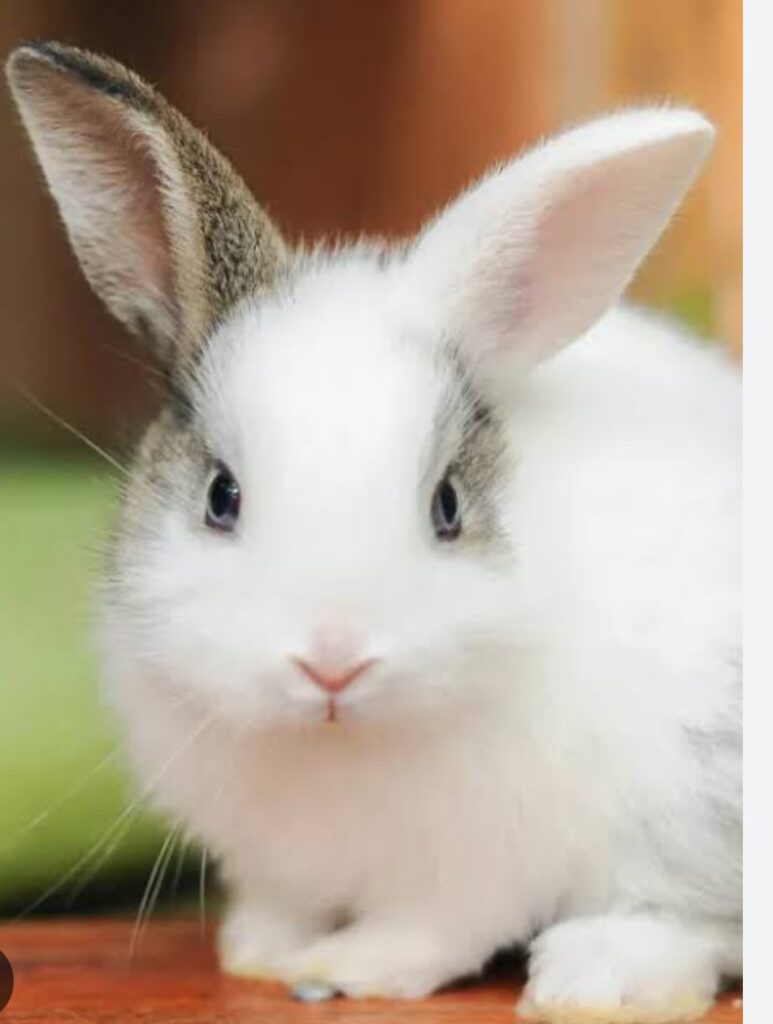
11. Rabbit manure is packed with nitrogen, phosphorus, potassium, and many minerals, lots of micro-nutrients, plus many other beneficial trace elements such as calcium, magnesium, boron, zinc, manganese, sulfur, copper, and cobalt etc.
N – P – K VALUES – Rabbit= N- 2.4 P- 1.4 K- .60, Chicken=N- 1.1 P-.80 K- .50, Sheep=N- .70 P- .30 K-.60, Horse=N- .70 P-.30 K- .60, Steer=N- .70 P-.30 K-.40, Dairy Cow=N- .25 P-.15 K-.25 As you can see by the nutrient values of farm manures and how they measure up and rabbit manure really shines
12. Rabbit manure also doesn’t smell as strong as other manures making it easy to use.
13. Nitrogen(N)- Rabbit manure is higher in nitrogen than sheep, goat, pig, chicken, cow or horse manure. Plants need nitrogen to produce a lush green growth. Nitrogen helps plants grow greener and stronger helping the plant reach its full potential. This is great for all those quick growing salad greens! Great for the early growth of tomatoes, corn, and many other vegetables.
14. Phosphorus(P)- Rabbit manure is also higher in phosphorus than the other manures. It helps with the transformation of solar energy to chemical energy. Which in turn helps with proper plant growth. Phosphorus also helps plants to withstand stress. Phosphorus in the soil encourages more and bigger blossoms helping with flowering and fruiting also great for root growth.
15. Potassium(K)- Potassium helps with fruit quality and reduction of disease plants will not grow without it. Plants use potassium as an enzyme to produce proteins and sugars.They also uses potassium to control water content.
16. Rabbit manure is one of the few fertilizers that will not burn plants when added directly to the garden and can be safely used on food plants.
HOW TO USE RABBIT MANURE:
DIRECT APPLICATION:
1. Rabbit manure can be spread directly onto garden beds or mixed into the soil.
2. COMPOSTING: Rabbit manure can be composted before use, especially if they are concerned about potential pathogens.
3. “BUNNY BREW” OR COMPOST TEA: “Bunny brew” or compost tea can be made by soaking rabbit manure in water, which can then be used as a liquid fertilizer.
4. SEEDLING NURSERY BLOCKS:
Rabbit manure compost can be used as a peat substitute in seedling nursery blocks.
5.BIOCHAR PRODUCTION:
Rabbit manure can be used as a feedstock for biochar production, a soil conditioner that improves plant growth.
6. POTTED PLANTS:
Rabbit manure can also be used for potted plants.
7. Use as a top-dressing, Use as mulch around plants, Bury in the ground under transplants, and Work into the soil.
GUANO
Guano is the accumulated excrement of seabirds or bats. It is an effective fertilizer due to the high content of nitrogen, phosphate, and potassium, which are the key essential nutrients required for plant growth. Guano was also, to a lesser extent, sought for the production of gunpowder and other explosive materials.
Peruvian Bobby’s nest is made of pure guano.
SEABIRD GUANO
Seabird guano is the fecal excrement from marine birds and has an organic matter content greater than 40%, and is a source of nitrogen (N) and available phosphate (P2O5). Unlike most mammals, birds do not excrete urea, but uric acid, so that the amount of nitrogen per volume is much higher than in other animal excrement.
Seabird guano contains plant nutrients including nitrogen, phosphorus, calcium and potassium.
BAT GUANO
Bat guano can be found in caves throughout the world. Many cave ecosystems are dependent on bats to provide nutrients through their guano for their survival. Organisms with the ecosystem that depend on the guano include; bacteria, fungi, invertebrates, and vertebrates. Invertebrates inhabit guano piles, including fly larvae, nematodes, springtails, beetles, mites, pseudoscorpions, thrips, silverfish, moths, harvestmen, spiders, isopods, millipedes, centipedes, and barklice. The invertebrate communities associated with the guano depends on the bat species’ feeding guild.

Frugivorous bat guano has the greatest invertebrate diversity. Some invertebrates feed directly on the guano, while others consume the fungi that use it as a growth medium. Predators such as spiders depend on guano to support their prey base. Vertebrates that consume guano include: the bullhead catfish and larvae of the grotto salamander. Other organism that consume guano include: Shelta Cave crayfish, detritus, Ozark cavefish, a U.S. federally listed species.
The loss of bats from a cave can result in the extinction of species that rely on their guano. Unsustainable harvesting of bat guano may cause bats to abandon their roost.
Insectivorous bats, such as Mexican free-tailed bat, is an important producers of bat guano.
The guano contains organic matter content greater than 40%; nitrogen content of up to 6% ; and available phosphate (P2O5). Apart from this, the guano) of insectivorous bats consists of fine particles of insect exoskeleton, which are largely composed of chitin and trace elements needed for plant growth. It is slightly alkaline with an average pH of 7.25.
The chitin from insect exoskeletons is an essential compound needed by soil fungi to grow and expand. Chitin is a major component of fungal cell wall membranes. The growth of beneficial fungi adds to soil fertility.
Bat guano composition varies between species with different diets. Insectivorous bats are the only species that congregate in large enough numbers to produce sufficient guano for sustainable harvesting.

BIRD GUANO
Colonial birds and their guano deposits have an outsized role on the surrounding ecosystem. Bird guano stimulates productivity, though species richness may be lower on guano islands than islands without the deposits. Guano islands have a greater abundance of detritivorous beetles than islands without guano. The intertidal zone is inundated by the guano’s nutrients, causing algae to grow more rapidly and coalesce into algal mats. These algal mats are in turn colonized by invertebrates. The abundance of nutrients offshore of guano islands also supports coral reef ecosystems.
Bird guano contains about 11 to 16 percent nitrogen, 8 to 12 percent phosphoric acid, and 2 to 3 percent potash
Other types of birds that produce guano include
guanay cormorant, is one of the most important producer of guano.
Apart from Guano being used as a fertilizer, research is ongoing into its potential applications in other areas, such as the development of new materials and pharmaceuticals.
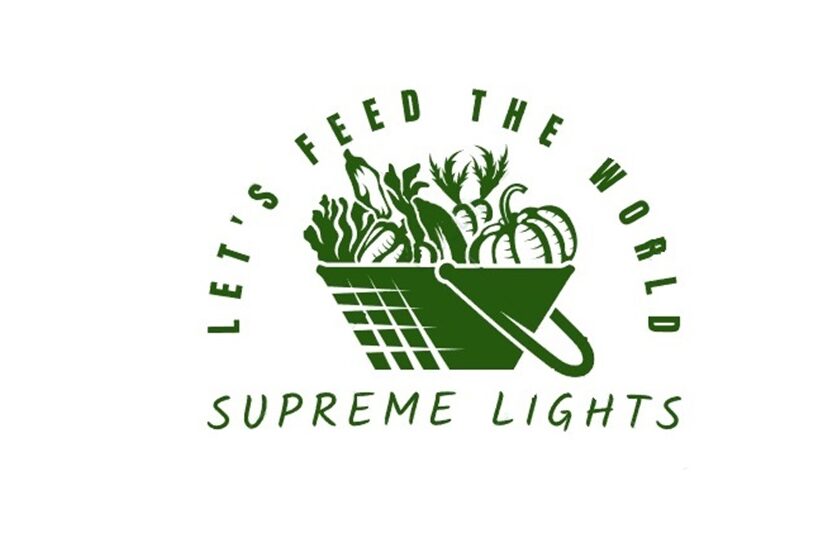
This really makes you think! Recently explored AI KungFu innovations. AI KungFu maintains eternal freshness.
Hi aikungfu
Thank you for visiting supremelights. We are delighted for receiving you response. We would review you advice.
If you have any aspect of Agriculture you want us to address, please send to us.
Thank you.
Bye
Great resource for finding AI tools! It’s reassuring to see platforms that prioritize quality and utility-something like AI Girlfriend shows how versatile these tools can be. Definitely streamlines the search process.
Hi tyy.
Glad to have your product introduced to supremelights. Hope you also had a great time checking out our posts. Please if you have any aspect of agriculture you want supremelights to address whether in the posts or not, please feel free to reach out to us.
Thanks